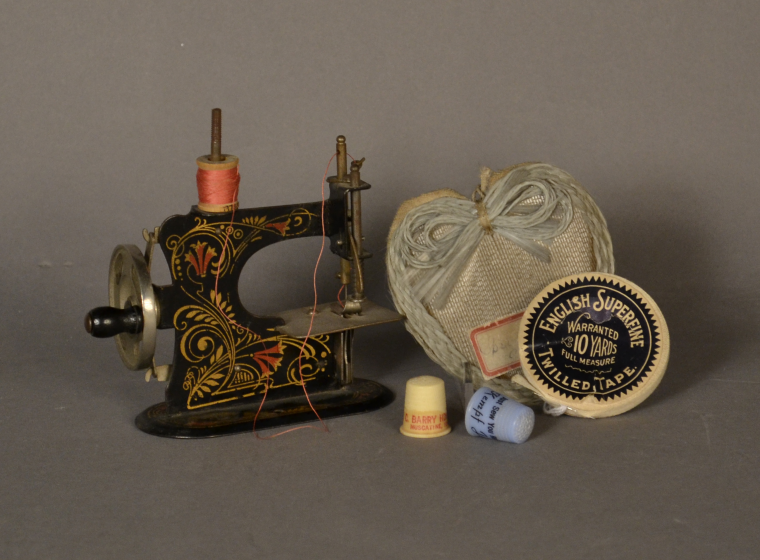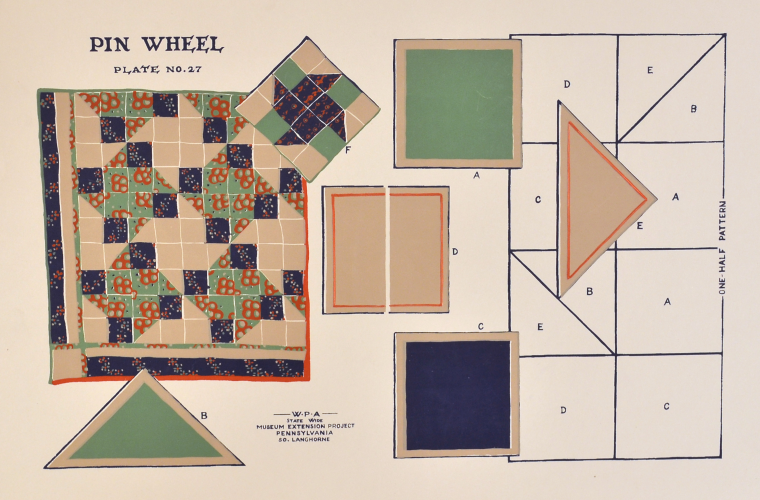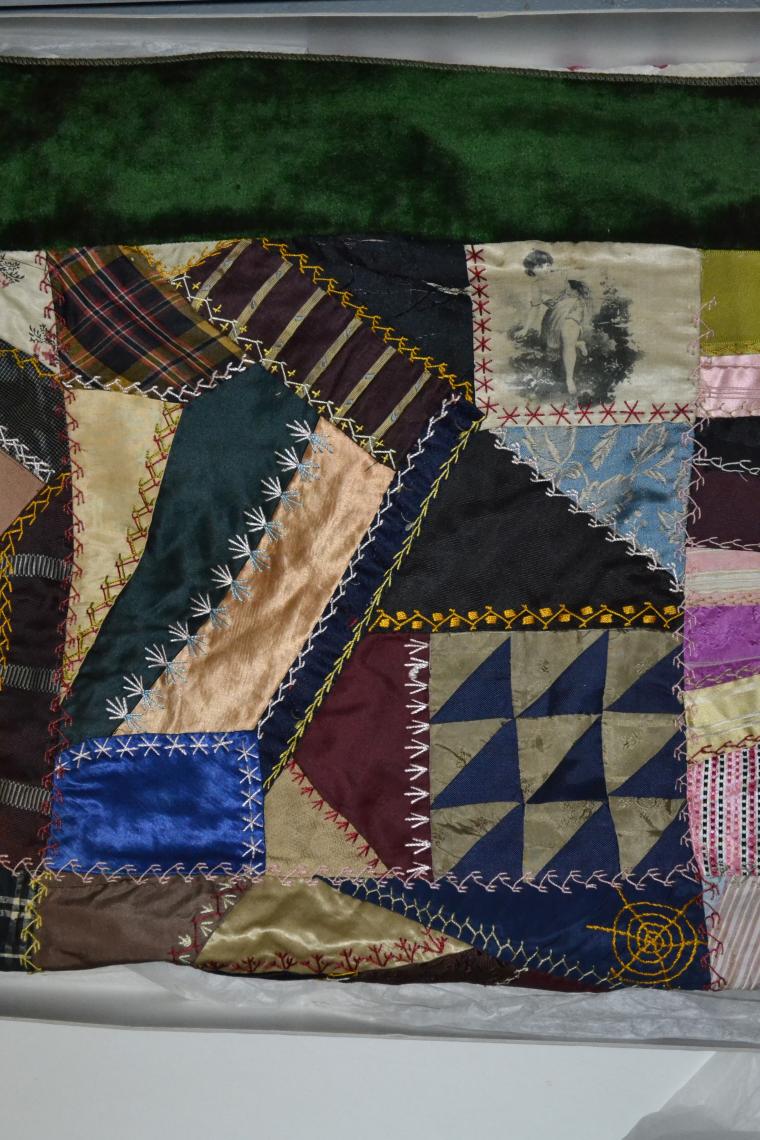
Early 19 century toy sewing machine and accessories, on display February 6 to April 4 at the Muscatine Art Center
ROCK ISLAND, ILLINOIS (February 1, 2021) — Quilts tell colorful stories that are deeper than the wadding, deeper than the pile of covers layered on a cold winter night. Not so long ago, quilts were considered among the most elaborate and treasured possessions in the typical American home. The exhibition, Great Cover Ups: Quilts of the 19th and 20th Centuries, is on view at the Muscatine Art Center from February 6 through April 4.
Pin Wheel-quilt pattern-serigraph, c1935. A Gift of the Musser Public Library

“The quilts in this exhibition are all part of the Muscatine Art Center’s permanent collection,” explains Melanie Alexander, Director. “The exhibition features about 30 different quilts and most have a Muscatine history connection.” For example, the ‘pattern’ quilt, "Lone Star" by Sarah Rider Bumgardner, was created around 1840. Bumgardner and her husband, George, came to Muscatine in 1837. Another notable piece is the ‘crazy’ quilt made by Ruth Lamphrey Cadle in 1880. Cadle arrived in Muscatine in 1847 and was a noted Muscatine philanthropist, serving as president of the Muscatine County Soldier's Aid Society, board member of the Iowa Soldiers' Orphans' Home, Muscatine Soldier's Monument Committee, Muscatine Ladies Sanitary Fair (under the Sanitary Commission), and member of the Women's Christian Temperance Union.
Crazy Quilt, made by Ruth Lamphrey Cadle, c1880. A gift of Mrs Mauree P Mahin and family

Adored for their intrinsic beauty as well as the utility of their warmth, quilts were folded away in “dowry chests,” given as wedding presents, packed to travel with immigrants, and passed on from one generation to another. For much of its history, quilting was primarily a practical technique that provided physical protection and insulation; but with decorative elements added, many quilts are now considered art pieces.
From the most expensive fabrics to the most desperate attempts at gathering woolen patches, each quilt is celebrated as both a link to a specific family’s history and as a representative object from a moment in time. Along with details about the family associated with each quilt, the wonderfully whimsical and imaginative pattern names are also identified. Examples include Pineapple, Log Cabin, Windmill Blades, Flying Geese, Carpenter’s Wheel, Grandmother’s Flower Garden, Calico Basket, Court House Steps, Friendship, Nine-Patch, Bear Paw, Lattice, Postage Stamp, Coin, and Sunbonnet Girl.
Great Cover Ups: Quilts of the 19th & 20th Centuries opens on both floors of the Stanley Gallery on Saturday, February 6, 2021. Also featured as part of the exhibition are eleven cotton and silk “prairie style” dresses originally worn by Muscatine pioneer women in the 1850s.
The Muscatine Art Center is open Tuesday through Friday, 10AM-4PM, Thursdays 10AM-7PM, and Saturdays and Sundays 1-4PM. Visitors are asked to wear a mask, sanitize their hands upon entering the building (hand-sanitizer is provided), practice physical distancing of six feet, and follow instructions given by staff who monitor the number of visitors in each space and restrict movement into spaces that have reached capacity.
The Muscatine Art Center is located at 1314 Mulberry Avenue in Muscatine, Iowa. Call 563-263-8282 for up-to-date details or visit www.muscatineartcenter.org for more information about programs and events.










